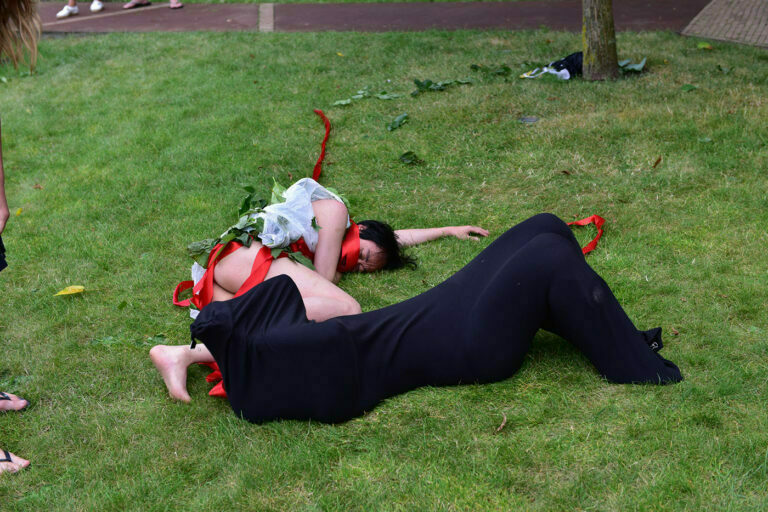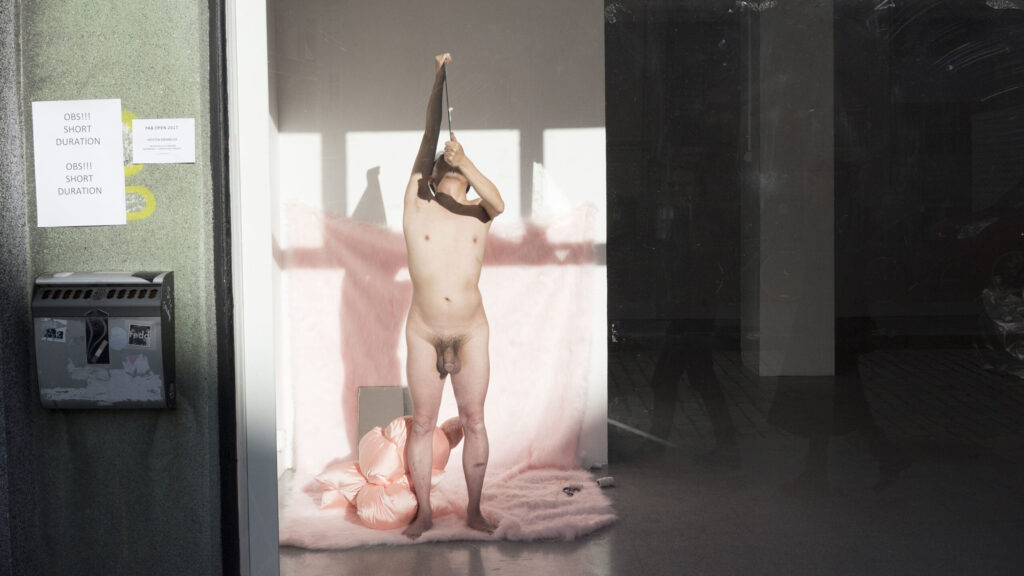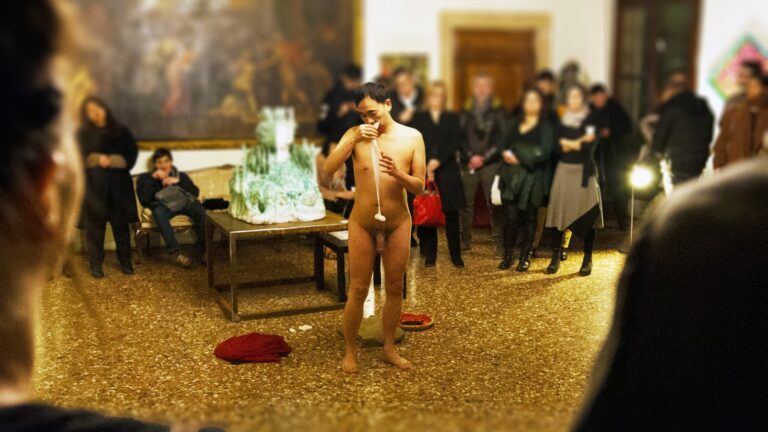performance art 2017 philemon mukarno
The Corporeal Cartography: Mapping Naked Performance in 2017
In 2017, the map was not drawn in ink but in skin. Philemon Mukarno’s trilogy traveled across Europe, pushing boundaries of exposure. Nakedness, ritual, and poetic precision became the compass points in Venice, The Hague, and Bergen. Every transition revealed new truths—each location echoing with vulnerability.
Ritual in the Labyrinth: Venice Opens the Journey
February in Venice brought “Liquid Air” to Palazzo Ca’ Zanardi, where the naked body faced the ornate chaos of the labyrinth. Instantly, flesh and marble collided. The audience followed, confronted by existential complexity. Nakedness served as the honest anchor—every transition word a step through the maze to find clarity amid confusion.
The Poetic in Performance: Trio in The Hague
By midsummer, The Hague’s festival distilled performance into pure corporeal poetry. Here, costumes vanished and voice faded. Only the body’s honest movement remained. Muscles transcribed verse as each gesture revealed “Raw Truth.” The Trio Performance bared not just the body, but the intention behind every action. The room, thick with anticipation, transformed into a living poem.
Elemental Endurance: Ritual at the Fjord in Bergen
Autumn’s challenge unfolded in Bergen. “Bread and Wine at the fjord” endured four hours in the city’s public market. Completely exposed to wind and gaze, the naked body became ritual offering. Vulnerability met the elements—no barrier existed between flesh and fjord. This meeting forged a rare communion—artist, land, and bystander fused in silent witness.
Crafting Trust and Authority: Experience Embodied
Authority radiated not from spectacle but from conviction. Mukarno’s control of form, minimal yet potent, spoke louder than words. Each venue tested experience, and each naked appearance deepened trust. The philosophical consistency of this trilogy united the year’s journey—a deliberate meditation on ritual, endurance, and radical honesty.
Raw Truth as Legacy
Across 2017, nudity became more than an act. It was ritual, language, and map. The trilogy’s progression—from Venice’s labyrinthine questions, through The Hague’s poetic sharpness, to Bergen’s elemental ritual—established corporeal honesty as both method and message. The naked body, time and again, proved to be the only necessary instrument.
The Naked Form as a Map in the Maze: Analysis of Liquid Air
The title of the exhibition, THE LABYRINTH, references a profound curatorial concept that has been historically utilized in postwar art to signify “existential complexity between utopia and angst”. The Labyrinth is a spatial structuring that represents a meeting between clarity and chaos.
In this environment, the naked body in Liquid Air functioned as the singular, unadorned element tasked with navigating this conceptual maze. The exposure of the body—the physical manifestation of “Raw Truth” —becomes the essential compass for locating authenticity within the ornate, complex historical setting of the Palazzo Ca’ Zanardi. The structural tension of the performance arises from placing intimate, immediate vulnerability against the grand, often overwhelming structures of European art history and existential confusion.
The decision to perform naked in this specific context asserts that true artistic and spiritual clarity (the “Raw Truth”) is achievable only through the removal of external layers, necessitating a courageous confrontation with the complexity of the world in an unmediated state. The vulnerable body, stripped of all defenses, is presented as the most honest form of engagement with the Labyrinthine condition of contemporary life.
The Poetic in Performance Art (IPA The Hague, July 2017)
Mid-year, the artistic focus shifted to an institutional setting in The Hague, where the naked body was rigorously tested as the ultimate instrument for creating pure poetic expression. This event placed the artist’s work within a structured environment of performance art discourse and training, validating its academic rigor.
The IPA Performance Art Festival in The Hague, Netherlands,
took place from June 25th to July 8th, 2017, hosted at Quartair, a former industrial bread factory. The event was a significant collaborative effort involving three major organizations: P.S. (Performance Site), IPA (International Performance Art Association), and PAS (Performance Art Studies). This high level of institutional engagement underscores the scholarly intent of the festival.
The thematic core of the entire event was “the poetic in performance art”. The central question posed to participating artists was how they could make the “poetic visible through various aspects of live performance,” transforming live action into a form of visual poetry. The artist presented several works within this festival, including Trio Performance and Garden Performance.
Analysis of Trio Performance and Corporeal Poetics
The philosophy underpinning the artist’s practice emphasizes an “economy of Means and a strict control of Form”. When applied to the theme of corporeal poetry, the naked body serves as the ideal artistic medium. If poetry relies on distillation—the reduction of language to its most essential, resonant form—then nakedness is the ultimate act of aesthetic reduction. It is the unmediated “Raw Truth” , functioning as the foundational lexicon from which a physical poem is composed.
In the Trio Performance , the presence of other collaborators meant that this radical vulnerability was shared, necessitating a dialogue rooted in radical honesty. The collective exposure amplified the fragility and interdependence among the performers, creating a unique environment where the poetic resonance emerged not from staged drama, but from the simple, unvarnished physical presence of the participants.
The choice of nakedness here demonstrates the application of academic rigor to expressiveness. By eliminating the expressive possibilities of costume or external props, the artist forced all communication to originate from the physical action, gesture, and the intense expressiveness of the body itself. This controlled use of the bare human form as a minimalist poetic tool perfectly aligned with the festival’s mandate to make the poetic visible through the fundamental elements of live performance. The Hague performance thus refined the conceptual intent established in Venice: moving from using the body as a map to using it as a purified language.
Elemental Exposure and Sustained Ritual (PAB Open Festival, Bergen, October 2017)
The culminating performances of the 2017 arc occurred in Bergen, Norway, where the artistic confrontation with vulnerability was deployed in its most sustained, public, and elemental form, transforming the act into a demanding ritual of endurance.
Festival Context: An Open Forum for Radical Honesty
The PAB Open Festival 2017 in Bergen, Norway, ran for three intensive days, from October 6th to 8th. This event was explicitly situated within a context that “featured nude and performance art,” signifying a curatorial environment highly receptive to the challenging aspects of corporeal exposure. Performances like Bread and Wine and Open Session Bergen were presented during this time.
The accompanying seminars emphasized the connection between art and “wider social/political issues” and focused intensely on “human vulnerability”. This environment provided the necessary critical depth for the public presentation of the work, framing nudity not as an isolated aesthetic choice but as a direct means of addressing shared social and psychological realities.
Deep Dive: Bread and Wine at the fjord (4-Hour Duration and Public Setting)
The performance Bread and Wine at the fjord represents the peak intensity of the year’s exploration. It was staged outdoors at the Fish Market in Bergen , a highly visible public location known as a symbol of the city’s maritime heritage and a popular tourist attraction.
The most defining factor of this piece was its duration: a demanding 4 hours. The combination of sustained time, public visibility, and the elemental exposure of the Norwegian landscape (“at the fjord”) converted the initial act of vulnerability into a deep ritual of endurance. The body, naked and unprotected, was confronted by the indifferent power of the natural elements, intensifying the emotional resonance of the “Raw Truth”.
The title itself, Bread and Wine, suggests themes of communion, sustenance, and ritualistic offering. By performing this piece naked and in a public square for such an extended period, the artist transformed the body into the site of a profound, non-verbal ceremony. The exposed form became the offering to the community—a visible act of spiritual and physical sacrifice enacted in plain sight, aligning perfectly with the goal of Ritual Art to have a powerful, transformational effect on both the performer and the audience. The sustained nature of the performance maximized this transformational potential, moving beyond mere dramatic representation into a genuine, prolonged test of resilience.
The 2017 Trilogy and the Path of Radical Authenticity
The 2017 international performance calendar—encompassing the philosophical maze of Venice, the poetic precision of The Hague, and the elemental endurance of Bergen—solidified the artist’s methodology for using the naked body as a transformative medium. The progression demonstrates a coherent and deepening inquiry into corporeal honesty.

















